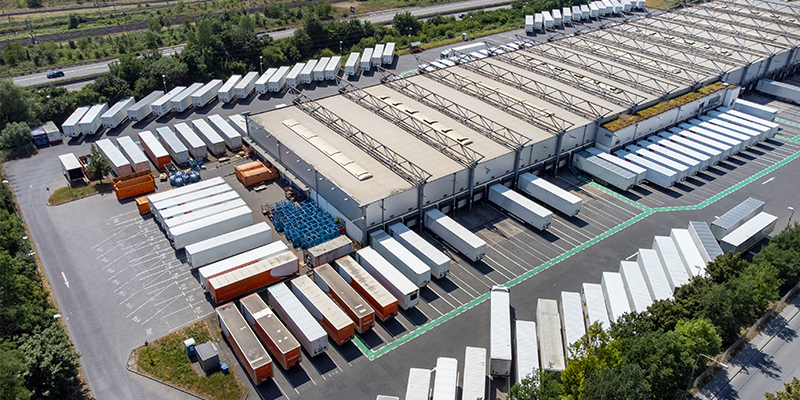Since the early days of the COVID-19 pandemic, investors have been waiting on the sidelines to take advantage of distressed properties, hopeful that the event would trigger something akin to the steep discounts available during the Global Financial Crisis (GFC). Funds, high-net-worth investors and family offices have been “stockpiling cash,” as one article from the Wall Street Journal put it, that will allow them to move quickly on discounted properties. However, banks have learned lessons from the GFC, and this time around have been more cautious to unload their book of CRE loans. As a result, there have been fewer distressed opportunities in this current economic cycle.
To date, strong operating fundamentals have allowed some owners to avoid significant price reductions that many have been anticipating. However, the tide may be starting to turn, as investors are finally starting to see emerging opportunities. The problem is the blurry line that exists between an asset that is value impaired and one that is truly distressed – so it’s critically important for investors to understand the difference between the two.
Distressed Assets Are Underperforming the Market
A distressed asset is one where the ownership is unable to meet its debt obligation as a result of below-market occupancy; this is made worse as tenants exit as leases near expiration or exercise their right to terminate. From a lender’s perspective, a distressed asset is in technical default, which requires the bank to maintain a greater capital reserve to offset the potential loss.
Value-impaired Assets Are an Effect of High Interest Rates
Alternatively, a value-impaired property is performing at or above-market standards but receives a lower valuation due to market conditions. These properties have “relatively” stable occupancy, active leasing activity and rents that meet the market. Despite healthy property-level performance, the higher cost of capital has suppressed the asset’s value and poses a refinancing risk based on today’s interest rates and valuations. Many of the value-impaired properties in March of 2022, just prior to the start of rising interest rates, had valuations that were at least 1.5 to 2 times greater than their values today.
Value-impaired properties have a current and performing loan, although the bank may have placed the loan on a watch list, particularly if the property is nearing a debt maturity or inside its debt-service coverage ratio (DSCR) or minimum occupancy requirements. For investors, a value-impaired property may need a capital infusion to meet a tenant lease requirement or pass the DSCR test.
Choosing the Right Strategy
An acquisition strategy will be different for a distressed versus value-impaired property. When pursuing a distressed property, investors should prepare for an upfront capital improvement plan and a longer recovery timeline. There will be a larger spread to recovering the cash flow to a justifiable return on investment, thus a lower starting basis relative to the anticipated exit valuation – which is difficult to assess in today’s office market. A distressed property may alternatively require repurposing the asset’s use or demolishing it for redevelopment into a higher and better use. Investors with the right capital profile will find distressed properties trading for pennies on the dollar.
For a value-impaired acquisition, the investor will also benefit from a reduced basis but will have to wait out what feels like an indefinite period for market valuations to re-stabilize and institutional funds to return with core capital-priced money. When that occurs, the investor can sell or refinance at more favorable terms. Meanwhile, the investors will need to have capital on hand, either stockpiled from cash flow after debt service, frontloaded or available via a capital call for a variety of operational needs, like amenity improvements, security upgrades, lease rollover, renewals, downtime and tenant-improvement packages.
Chicago Is Seeing Deep Discounts, But Capital Is Starting to Flow
In 2023, value-impaired properties were perceived as off by 50% from prior peak values. Today, that percentage is coming to fruition at a much higher number. In the Chicago market, for example, three office buildings larger than 500,000 square feet – 150 N Michigan Avenue, Oakbrook Terrace Tower, and 230 W Monroe Street – sold for discounts greater than 50% with occupancies at or around 60%.
There are numerous other notable office properties reported to be trading including 333 W Wacker Drive, 70 W Madison Street and 1 N LaSalle Street, though deals terms are not yet publicly available. Whisper pricing indicates greater discounts than the above, far wider from the subject properties’ prior peak values. The recent closings and current activity should signify the market coming out of the trough. With more and more closed trades, it will mean capital has re-entered the market, which is long overdue and a signal for the tide to start to come back in. More capital begets more capital, in turn creating competition and the early stages of value stabilization.
While both distressed and value-impaired properties are an opportunity for investors to acquire an asset at a discount, the similarities end there. Investors must understand the key differences between the two to execute the right strategy for their capital and achieve a successful investment outcome.













